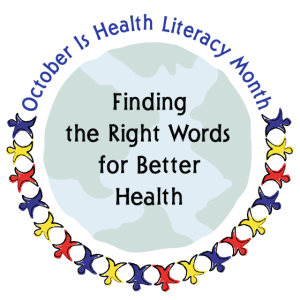 In the last decade, health equity has increasingly become a critical concern in the field of public health. From the local to federal levels, there’s been a call for research, initiatives, and outreach that minimize health inequities and provide opportunities for all people to reach optimal health. Through these efforts, there’s been growing acknowledgement that social determinants are just as influential on health, functioning, and quality-of-life as individual decision-making and genetic predisposition.
In the last decade, health equity has increasingly become a critical concern in the field of public health. From the local to federal levels, there’s been a call for research, initiatives, and outreach that minimize health inequities and provide opportunities for all people to reach optimal health. Through these efforts, there’s been growing acknowledgement that social determinants are just as influential on health, functioning, and quality-of-life as individual decision-making and genetic predisposition.
The Office of Disease Prevention and Health Promotion (ODPHP) defines social determinants of health as the social, economic, and physical conditions of the environments in which people are born, live, learn, work, play, worship, and age. The ability to make healthy decisions and sustain healthy behaviors has much to do with the five key areas of social determinants of health, which include a person’s: economic stability; education quality and opportunities; neighborhood and built environment; and social and community context. From access to mass media and emerging technologies to language and literacy, understanding and addressing the influence of social determinants of health on health outcomes – particularly in populations made most vulnerable – is important to public health’s journey to advancing health equity.
Health Literacy as a Representation of Health Equity
Although today marks the end of October’s Health Literacy Month, it’s important to maintain a year-round focus on health literacy as an influential factor for addressing social determinants of health. The National Action Plan to Improve Health Literacy, published by ODPHP in 2010, characterizes health literacy as “the degree to which individuals have the capacity to obtain, process, and understand basic health information and services needed to make appropriate health decisions.”
In the U.S., it’s easy to assume health literacy is a common ability among American adults, especially since the passage of the Affordable Care Act has increased access to health insurance and healthcare. But according to the latest data, only 12% of adults in the United States have proficient health literacy skills. This means that nine out of ten individuals in the U.S. are not sufficiently equipped to translate health information into appropriate health decisions, which can influence their health outcomes in the following ways:
- Lower usage of preventive measures and care
- Higher rates of hospitalization and utilization of emergency services
- Decreased ability to effectively manage long-term or chronic illnesses
- Negative psychological effects (i.e., sense of shame) related to low health literacy
On the surface, health literacy seems to be a function of education in that being health literate requires proficiency in general literacy, which is often developed through the educational system. Health literacy, however, is not one-dimensional. For example, access to higher education, economic, and job opportunities can depend on the quality of education and job training received; which is contingent on resources invested in schools, as well as education and job programs; which are often determined by socioeconomic status, community context, social policies, and political systems.
Essentially, social determinants of health are interconnected in many ways. As a result, the layers of health (in)equity are woven tightly and with much complexity, making it difficult to determine where to begin when addressing this issue. Still, local public health agencies are well-positioned to advance such work.
Promoting Health Literacy to Advance Health Equity
Embedded at the community level, local health departments (LHDs) possess intimate knowledge of and familiarity with constituent demographics, attitudes, beliefs, and behaviors. But knowing the community and knowing how to engage and include the community are not the same. LHDs must use their understanding of constituents to develop education and outreach materials that appropriately engage the people they serve, enhance understanding of health information and services, and increase uptake of positive health behaviors to improve health outcomes. That means developing multi-media materials (print and digital) in plain language; translating those materials for non-native English speakers; incorporating mediums that appeal to different learning styles (i.e., audio, visual, kinesthetic); and ensuring cultural sensitivity and competency.
To support public health professionals’ efforts to promote health literacy, several federal and national leaders developed the following resources:
- 10 Attributes of a Health Literate Health Care Organization (National Academies). List detailing ten attributes of a health literate health care organization, along with references and suggestions on how to achieve those attributes.
- Action Plan to Improve Health Literacy (CDC). Sample planning tool to help LHDs develop a set of health literacy priorities and identify action steps and specific measurable objectives to evaluate.
- Health Literacy Online Guide (ODPHP). Research-based guide to developing intuitive health websites and digital tools that can be easily accessed and understood by all users to find, process, and use online health information.
- Health Literacy Training (CDC). List of free training opportunities for continuing education and/or certificates.
NACCHO encourages our members and partners to use these resources. Improving health literacy in your community can play a role in improving health equity and, thereby, health outcomes. If your LHD has an innovative or especially successful practice for addressing health literacy, please share it with us!







